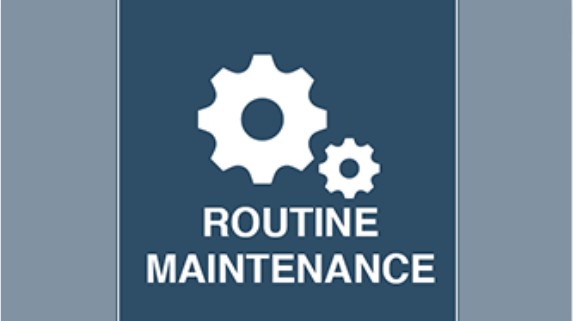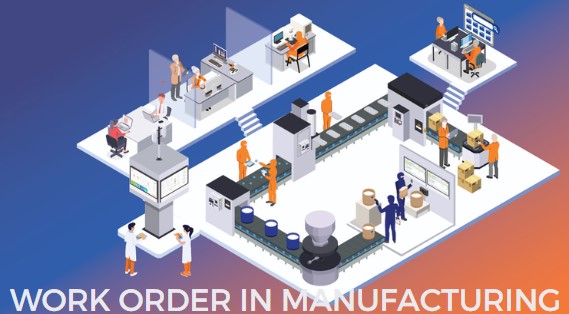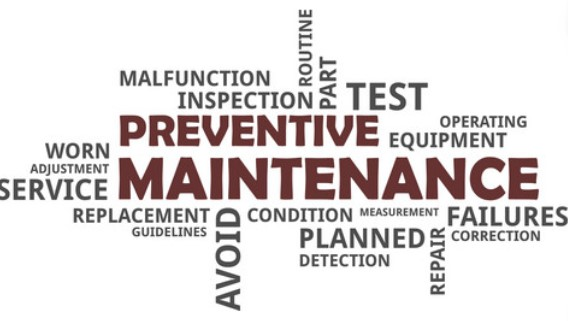
Why Routine Maintenance is Important?
Madhurima Sanyal |
29 Mar 2024 |
06:01 AM
- Understanding Routine Maintenance: Its Definition and Significance
- Overview of Routine Maintenance Importance
- The Importance of Routine Maintenance tasks
- Types of Routine Maintenance
- Routine Maintenance Workflow
- How a CMMS Supports Routine Maintenance activities
- Conclusion

Role of Work Order in Manufacturing
Pratik Lohiya 12 Apr 2024 | 11:49 AMExplore the evolving landscape of work order management in manufacturing, from preventive maintenance strategies to integration with advanced technologies, driving efficiency and innovation...
Understanding Routine Maintenance: Its Definition and Significance
Routine maintenance strategy is a vital aspect of any organization's operational strategy, encompassing a series of planned activities aimed at preserving the functionality and reliability of equipment, machinery, and facilities. In essence, routine maintenance involves the regular inspection, servicing, and repair of assets to prevent unexpected failures and ensure optimal performance.
Defined as the systematic approach to upkeep and care, routine maintenance tasks are integral to sustaining the operational efficiency of equipment and facilities. From simple tasks such as cleaning and lubrication to more complex procedures like calibration and testing, these activities form the backbone of effective asset management.
Overview of Routine Maintenance Importance
The significance of routine maintenance cannot be overstated. By proactively addressing potential issues before they escalate, organizations can minimize downtime, reduce the risk of equipment failure, and extend the lifespan of their assets. In this overview, we'll delve into the importance of routine maintenance and explore its various facets in ensuring operational continuity and efficiency.
The Importance of Routine Maintenance tasks
Routine maintenance tasks play a pivotal role in the operational efficiency and longevity of assets within businesses and industries. One of the primary advantages of routine maintenance is its ability to significantly decrease downtime, thereby ensuring continuous productivity and minimizing disruptions to operations.
Decreasing Downtime: The Key Role of Routine Maintenance

By performing routine maintenance tasks on a regular basis, organizations can proactively address potential issues before they escalate into costly breakdowns or failures. This proactive approach helps to prevent unexpected downtimes, which can have detrimental effects on production schedules, customer satisfaction, and overall profitability.
Benefits of Routine Maintenance for Businesses and Industries
Moreover, routine maintenance strategy contribute to the overall reliability and safety of equipment and facilities. By adhering to scheduled maintenance activities such as inspections, lubrication, and calibration, organizations can identify and rectify potential safety hazards before they pose a risk to personnel or property.
The benefits of routine maintenance extend beyond operational efficiency to encompass cost savings and regulatory compliance. By implementing proactive maintenance strategies, businesses can reduce repair costs, extend the lifespan of assets, and ensure compliance with industry regulations and standards.
Types of Routine Maintenance
Routine maintenance encompasses various approaches and strategies aimed at ensuring the continuous functioning and reliability of equipment and facilities. Here are some common types of routine maintenance:
Time-Based Maintenance (TBM)
TBM involves performing maintenance tasks at predetermined time intervals. This approach is based on the assumption that certain components or systems will deteriorate over time, regardless of their usage. Examples of TBM tasks include regular inspections, lubrication, and filter replacements.
Failure-Finding Maintenance (FFM)
FFM focuses on actively seeking out potential failures or defects within equipment through testing and analysis. Unlike preventive maintenance, which aims to prevent failures, FFM aims to identify hidden faults that could lead to equipment failure if left unaddressed.
Risk-Based Maintenance (RBM)
RBM prioritizes maintenance activities based on the level of risk associated with equipment failure. By assessing the likelihood and consequences of failure, organizations can allocate resources more effectively to mitigate high-risk areas while optimizing maintenance efforts.
Condition-Based Maintenance (CBM)
CBM relies on real-time monitoring and analysis of equipment condition to determine the need for maintenance. By continuously monitoring key indicators such as temperature, vibration, and fluid levels, CBM enables organizations to perform maintenance only when necessary, minimizing downtime and maximizing asset reliability.
Comparing Routine Maintenance vs. Preventive Maintenance
Routine maintenance and preventive maintenance are often used interchangeably, but there are key differences between the two approaches. While routine maintenance focuses on regularly scheduled tasks to ensure equipment functionality, preventive maintenance involves proactively identifying and addressing potential issues before they occur.
Preventive maintenance is more predictive in nature, aiming to anticipate and prevent failures, whereas routine maintenance is typically performed according to a predefined schedule without predictive analysis. Additionally, reactive maintenance, which involves addressing issues only after they occur, contrasts with both preventive and routine maintenance by responding to problems as they arise rather than proactively preventing them.
Routine Maintenance Workflow
Implementing an effective routine maintenance workflow is crucial for ensuring the reliability and longevity of equipment and facilities. Here's a step-by-step guide to streamline the routine maintenance process:
Identifying Assets Suitable for Routine Maintenance

Begin by identifying the assets and equipment that are required to perform routine maintenance. This may include machinery, vehicles, production lines, HVAC systems, and safety equipment. Conduct a thorough assessment to prioritize assets based on criticality, usage frequency, and potential impact on operations.
Establishing Time-Based Maintenance Intervals
Once the assets have been identified, establish time-based maintenance intervals for each asset. This involves determining how often routine maintenance tasks need to be performed to maintain optimal performance and prevent failures. Factors such as manufacturer recommendations, operational history, and industry best practices should inform the maintenance frequency.
Developing Checklists for Each Asset
Develop comprehensive checklists outlining the specific routine maintenance tasks to be performed for each asset. These checklists should include detailed instructions, safety precautions, and a list of required tools and materials. Consider involving maintenance technicians, machine operators, and other relevant personnel in the checklist development process to ensure accuracy and relevance.
Executing Routine Maintenance Tasks
With the maintenance schedule and checklists in place, it's time to execute routine maintenance tasks according to the established intervals. This may involve tasks such as lubrication, calibration, inspections, filter replacements, and minor repairs. Assign responsibilities to maintenance team and ensure proper documentation of all maintenance activities performed.
By following this structured routine maintenance workflow, organizations can effectively manage their assets and minimize the risk of unplanned downtime, equipment failures, and costly repairs. Additionally, integrating preventive and routine maintenance practices into the workflow helps maintain equipment reliability and ensures the safety of personnel and operations.
Examples of Routine Maintenance tasks include::
-
Regular inspections of machinery and equipment
-
Lubrication of moving parts to prevent wear and tear
-
Adjusting machinery and inspecting equipment for optimal performance
-
Cleaning and servicing HVAC systems
-
Testing and calibrating safety equipment such as fire alarms and emergency exits
How a CMMS Supports Routine Maintenance activities
A Computerized Maintenance Management System (CMMS) is a powerful tool that streamlines and enhances routine maintenance activities within organizations. Here's how a CMMS supports various aspects of routine maintenance:
Storing Maintenance Data Efficiently Using CMMS

A CMMS serves as a centralized database for storing critical maintenance data, including equipment details, maintenance schedules, work orders, inspection reports, and historical maintenance records. By digitizing and organizing this information, CMMS enables easy access, retrieval, and analysis of maintenance data, facilitating informed decision-making and proactive maintenance planning.
Controlling Spare Parts Inventory with CMMS
CMMS software includes inventory management features that allow organizations to effectively control spare parts inventory. By maintaining accurate records of spare parts usage, stock levels, and reorder points, CMMS helps prevent stockouts, minimize inventory carrying costs, and ensure timely availability of spare parts for routine maintenance jobs. Additionally, CMMS can generate automated alerts for low stock levels, expiring parts, or critical shortages, enabling proactive inventory management.
Scheduling and Managing Maintenance Work with CMMS
CMMS simplifies the process of scheduling and managing maintenance work by providing tools for creating, assigning, and tracking work orders. Maintenance technicians can access work orders through the CMMS platform, view task details, and update work status in real-time. Furthermore, CMMS allows for the prioritization of maintenance tasks based on urgency, equipment criticality, and resource availability, optimizing workflow efficiency and minimizing downtime.
By leveraging a CMMS for routine maintenance activities, organizations can improve operational efficiency, prevent costly downtime, and enhance asset reliability. The systematic storage of maintenance data, efficient control of spare parts inventory, and streamlined scheduling and management of maintenance work contribute to the overall effectiveness of maintenance operations.
Conclusion
Routine maintenance is a fundamental aspect of effective asset management, contributing significantly to operational efficiency, reliability, and safety. By performing routine maintenance tasks regularly and systematically, organizations can minimize downtime, reduce the risk of equipment failure, and extend the lifespan of their assets. Preventive maintenance, on the other hand, offers a proactive approach to maintenance, focusing on identifying and addressing potential issues before they escalate. Both approaches play critical roles in maintenance strategies, with preventive maintenance providing predictive insights and routine maintenance ensuring the consistent upkeep of equipment.

By understanding the importance of routine maintenance and leveraging tools such as CMMS, organizations can optimize their proper maintenance operations, enhance productivity, and achieve long-term success. Whether it's scheduling regular inspections, controlling spare parts inventory, or managing maintenance work efficiently, investing in routine maintenance practices is essential for maintaining operational excellence in today's competitive landscape.